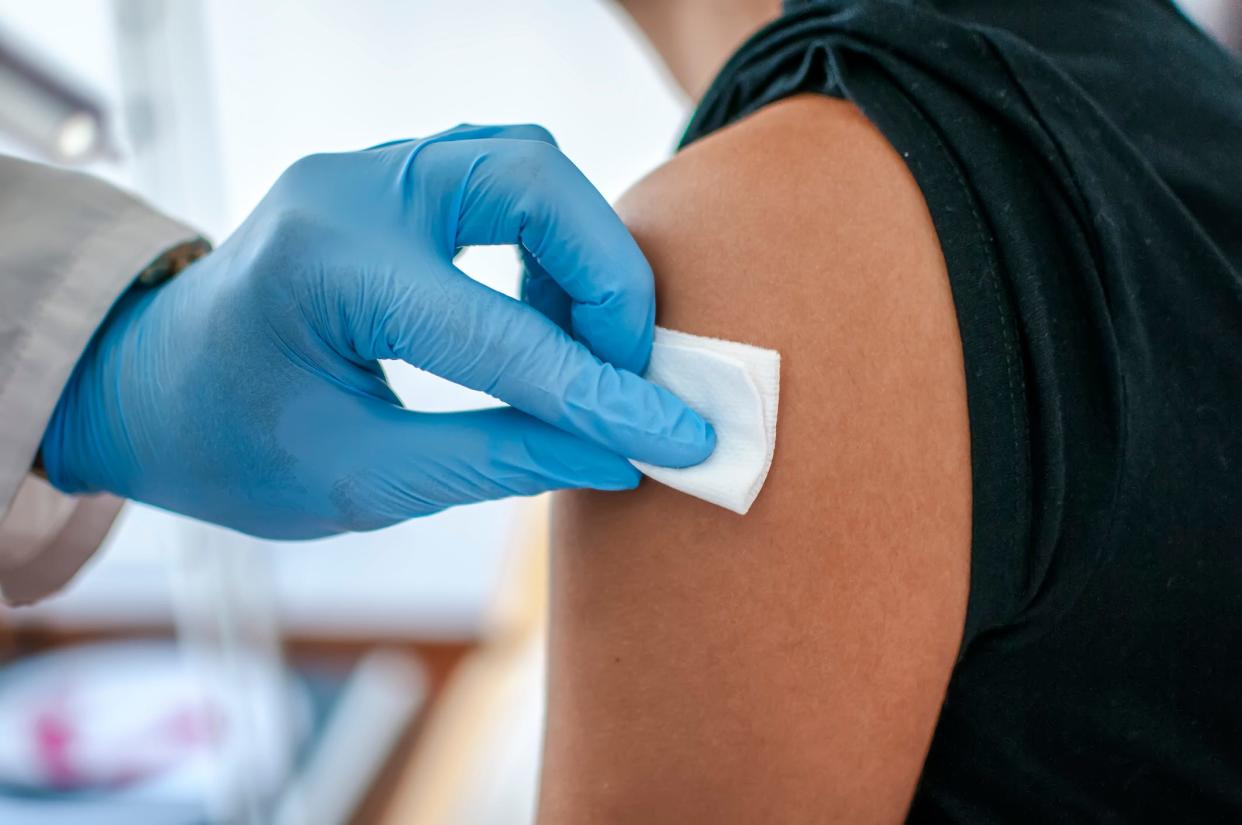This bacteria can kill young people. There's a new way to prevent it.

There's a new way for young people to combat a bacterial disease that can cause hearing loss, severe neurological damage, the loss of limbs, and, in many cases, death.
Meningococcal disease, while rare, is preventable. And it’s “one of the most feared infections we face,” according to Dr. Dial Hewlett, medical director at Westchester County Department of Health in New York.
The Centers for Disease Control and Prevention reports up to 15% of people who develop this bacterial disease die, even after treatment, with some succumbing within 24 hours, Hewlett said. As many as 20% of people who survive an infection live with permanent consequences.
A new vaccine recommended Wednesday by a federal advisory panel will provide broader protection in fewer doses. This new option is a "major advancement" for teens and young adults, and will also make it easier for parents to keep track of vaccinations, Hewlett said.
What is meningitis vs. meningococcal disease?
Meningococcal disease is any illness caused by a bacteria called Neisseria meningitidis. The new meningococcal vaccines protect against infections caused by this bacteria.
While this bacteria can cause meningitis – the most common type of meningococcal disease – the disease can also be caused by viruses, fungi, parasites, or amoebas. In patients with meningitis, the bacteria infects the protective lining of the brain and spinal cord and causes swelling.
Three types of bacteria that cause the most disease in the United States are distinguished as B, C, and Y. The CDC says 1 in 10 people are “carriers,” meaning they have bacteria in the back of their nose and throat without developing disease.
People can spread meningococcal disease by sharing saliva or spit through close contact, such as by coughing or kissing. Most people don’t catch the bacteria through casual contact or by breathing the same air as someone who is infected, according to the CDC.
Symptoms, who is at risk of meningococcal disease
The most common symptoms of meningococcal meningitis include fever, headache and a stiff neck, but some patients also experience nausea and vomiting, confusion and increased sensitivity to light.
The bacteria can also cause a bloodstream infection, called septicemia, which can lead to fever and chills, cold hands and feet, severe aches or pains, diarrhea and rapid breathing.
The CDC says infants younger than 1, teens and young adults 16 to 23, and adults 65 and older have the highest rates of meningococcal disease in the U.S. Outbreaks most commonly occur among college students and military recruits because they live in crowded settings, Hewlett said.
Patients of any age who have medical conditions that weaken their immune system, such as HIV infection, are at a higher risk of developing the disease.
Vaccines for meningococcal disease
There are two types of vaccines licensed in the United States: One that targets A, C, W, and Y serotypes of meningococcal disease and another that targets the B serotype.
The CDC recommends one dose of the first vaccine for all preteens at around 11 or 12 and a booster dose for teens who've had that initial shot at 16. The agency also recommends the second vaccine for teens and young adults 16 through 23, which is administered in two or three doses, depending on the brand.
While younger children and adults don’t typically get meningococcal vaccines, they may be eligible for the vaccine if they have certain medical conditions, plan to travel to areas where the disease is common, or are at risk for exposure during an outbreak.
How is the new vaccine different?
Full protection against meningococcal disease requires at least four shots, sometimes more.
This is where the innovation comes into play. The new pentavalent vaccine called Penbraya – created by drug giant Pfizer – requires only two doses and protects against the five most common disease serotypes: A, B, C, W and Y.
The vaccine was approved by the Food and Drug Administration last week for ages 10 through 25. However, the CDC's advisory panel voted to add the new vaccine option for people 16 through 23.
Treatment for meningitis, meningococcal disease
Doctors use a number of antibiotics to treat meningococcal disease and as a prophylaxis if they suspect someone has been exposed. However, even with treatment, up to 15% of people with the disease will die.
Send tips to Adrianna Rodriguez at adrodriguez@usatoday.com
Health and patient safety coverage at USA TODAY is made possible in part by a grant from the Masimo Foundation for Ethics, Innovation and Competition in Healthcare. The Masimo Foundation does not provide editorial input.
This article originally appeared on USA TODAY: New vaccine for young people to prevent meningococcal disease

